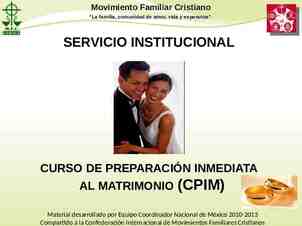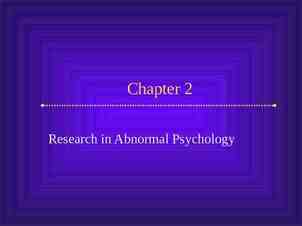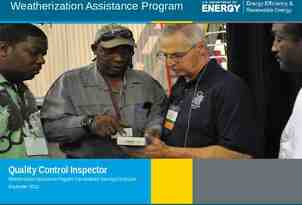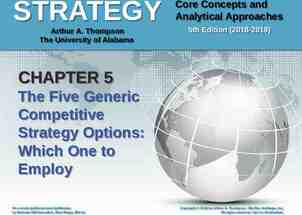Chapter (7) Assessment of respiratory system Faculty of Nursing-IUG
20 Slides893.50 KB
Chapter (7) Assessment of respiratory system Faculty of Nursing-IUG
Anatomy of Respiratory System The lung is a two cone-shaped, elastic structure suspended within the thoracic cavity. Lung are paired, they are not complete symmetric, the right lung contain three lobe, whereas the left lung contain only two lobes. The apex of each lung extended slightly above the clavicle, where the base is at the level of diaphragm The thoracic cavity contains the nasopharynx, larynx, trachea, bronchi, bronchioles, alveoli. The thoracic cavity is lined by a thin, double- layered 2 serous membrane collectively called the pleural membrane
3
4
Assessment of respiratory system Subjective data: the nurse must ask the client about: Coughing (productive, non productive) Sputum (type & amount) Allergies, dyspnea or SOB (at rest or on exertion). Chest pain, history of asthma, bronchitis, emphysema, tuberculosis. Cyanosis, pallor. Exposure to environmental inhalants (chemicals, fumes). History of smoking (amount and length of time) 5
Technique for Respiratory Exam Before beginning, if possible: Quiet environment Proper positioning (patient sitting for posterior thorax exam, supine for anterior thorax exam) Expose skin for auscultation Patient comfort, warm hands and diaphragm of stethoscope, be considerate of women (drape sheet to cover chest) After that the nurse should apply the four techniques; Inspection, Palpation, Percussion and Auscultation 6
Initial Respiratory Survey (Inspection) Observe the patient’s breathing pattern Rate (normal vs. increased/decreased) Depth (shallow vs. deep) Effort (any sign of accessory muscle use, inspect neck) Assess the patient’s color Cyanosis Normal Respiratory Rates Infant 30-60 Toddler 24-40 Preschooler 22-34 School-age child 18-30 Adolescent 12-16 Adult 16-20 7
Inspection and assessment of respiration patterns Assess the skin and overall symmetry and integrity of the thorax. Assess thoracic configuration. Client must be uncovered to the waist, and in sitting position without support. Observation of skin may give you knowledge about nutritional status of the client. Anterior- posterior diameter of thorax in normal person less than the transverse diameter (1:2). Assess for abnormality of configuration, e.g. pigeon chest, funnel chest, spinal deformities. Assess ribs and inter spaces on respiration – may give information about obstruction in air flow e.g. bulging of inter spaces on expiration may be from obstruction to air out flow “tumor, aneurysm, cardiac enlargement”
Assess pattern of respiration Normally: men diaphragmatically and and children – breathe Women breathe thoracically or costally. Tachypnea: respiratory rate over than 20/m for adult. Bradypnea: respiratory rate less than 10/m. Palpation: palpate areas of chest especially areas of abnormalities. If clients complains: all chest areas must palpated carefully for tenderness, bulges, or any movements 9
Assess thoracic expansion: Anterior: put your hands over anterior-lateral chest and thumbs extended along costal margin pointing to xiphoid process. Posterior: thumbs placed at level of T 10 with palms placed on posterior-lateral chest. By two ways you feel amount of thoracic expansion during quiet and deep breathing, and symmetry of respiration between left and right hemi thoraces. Assessment of fremitus: which is vibration perceptible on palpation" In subcutaneous emphysema: you must palpate the tissue, audible cracking sounds are heard – 10 these sounds are termed Crepitation
11
Percussion of chest: Done to determine relative amounts of air, liquid, or solid material in the underlying lung, and to determine positions and boundaries of organs. Percussion done for posterior and anterior and lateral aspects of chest with all directions, and with about “5”cms intervals. Auscultation: To obtains information about the function of respiratory system & to detect any obstruction in the passages. Instruct the client to breathe through the mouth more deeply and slowly than in usual respiration and then to hold the breath for a few seconds at the end of inspiration to increase intrapleural pressure and reopen collapsed alveoli. Auscultate all areas of chest for at least one complete respiration: 12 anterior locations and 14 posterior locations Auscultate symmetrically: Should listen to at least 6 locations anteriorly and posteriorly
13
Breathe sounds: are analyzed according to pitch, intensity, quality, and relative duration of inspiratory and expiratory phases. Bronchial breathe sounds: are normally heard over manubrium of sternum If heard over lung tissue – indicate pathologic condition, these sounds “high-pitched loud sounds with decrease inspiratory and lengthened increase expiratory phases. Absent or decreased breath sounds can occur in: Foreign body. Bronchial obstruction. Shallow breathing. Emphysema 14
Breath Sounds Normal breath sounds are distinguished by their location over a specific area of the lung and are identified as tracheal, vesicular, bronchovesicular, and bronchial (tubular) breath sounds as the next: 1. Tracheal Very loud, high pitched sound Inspiratory Expiratory sound duration Heard over trachea in the neck 2. Bronchial Loud, high pitched sound Expiratory sounds Inspiratory sounds Heard over manubrium of sternum If heard in any other location suggestive of consolidation 15
3. Bronchovesicular Intermediate intensity, intermediate pitch Inspiratory Expiratory sound duration Heard best 1st and 2nd ICS anteriorly, and between scapula posteriorly If heard in any other location suggestive of consolidation 4. Vesicular Soft, low pitched sound Inspiratory Expiratory sounds Major normal breath sound, heard over most of lungs 16
Adventitious Breath Sounds An abnormal condition that affects the bronchial tree and alveoli may produce adventitious (abnrmal addtional) sounds. Adventitious sounds are divided into two categories: discrete, noncontinuous sounds (crackles) and continuous musical sounds (wheezes) as the next: 1. Crackles (Rales) Discontinuous, intermittent, nonmusical, brief sounds. Heard more commonly with inspiration Classified as fine or coarse Its may associated with Prolonged recumbency Crackles caused by air moving through secretions and collapsed alveoli and associated with the following conditions: pulmonary edema, early CHF, and 17 pnumonia
2. Wheeze Continuous, high pitched, musical sound, longer than crackles Whistle quality, heard during expiration, however, can be heard on inspiration Produced when air flows through narrowed airways Associated conditions: asthma, chronic bronchitis, and COPD 3. Rhonchi Similar to wheezes (subtype of wheeze) Low pitched, snoring quality, continuous, musical sounds Implies obstruction of larger airways by secretions Associated condition: acute bronchitis 18
4. Stridor Inspiratory musical wheeze Loudest over trachea Suggests obstructed trachea or larynx Medical emergency requiring immediate attention Associated condition inhaled foreign body 5. Pleural Friction Rub Pleural friction rubs are specific examples of crackles. Discontinuous or continuous brushing sounds It is a loud dry, cracking or grating sound indicating of pleural irritation, heard over lateral and anterior lung in sitting position that heard during both inspiratory and expiratory phases Occurs when pleural surfaces are inflamed and rub against each other Associated conditions as pleural effusion, Pneumonothorax
Medical conditions associated with decreased or absent of breath sounds Asthma COPD Pleural Effusion: fluid accumulating within the pleural space Pneumothorax: caused by accumulation of air or gas in the pleural space. ARDS( adult respiratory distress syndrome) Atelectasis : is defined as a state in which the lung, in whole or in part, is collapsed or without air entery Five Main Symptoms of Respiratory Disease Cough Sputum Pain Breathlessness Wheeze

























